Rémi Piché-Taillefer
Gotta Go Fast When Generating Data with Score-Based Models
May 28, 2021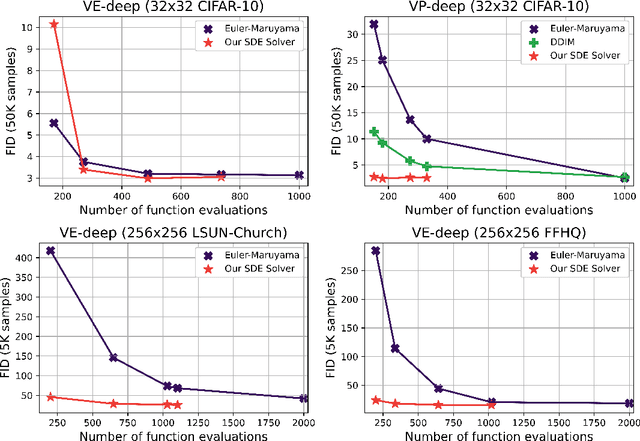
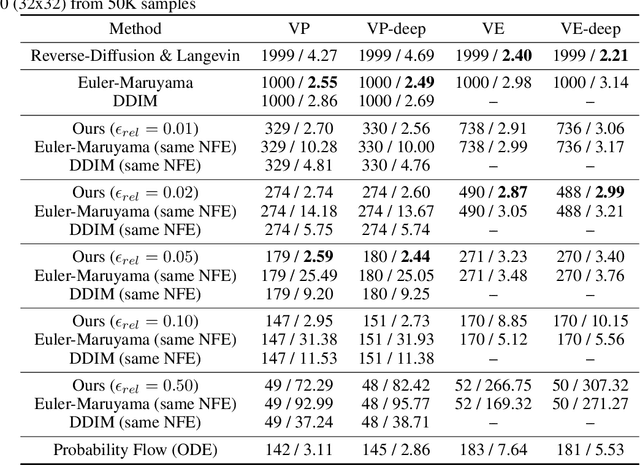
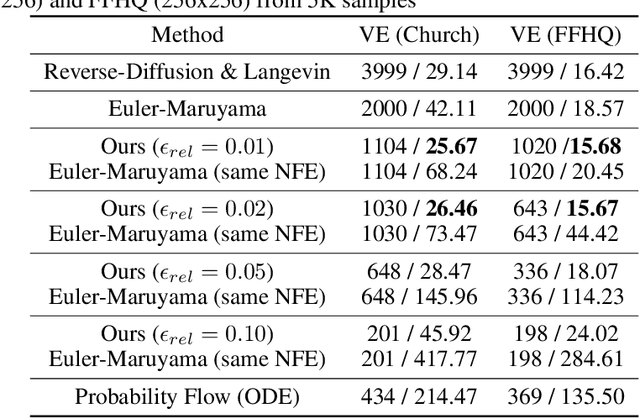
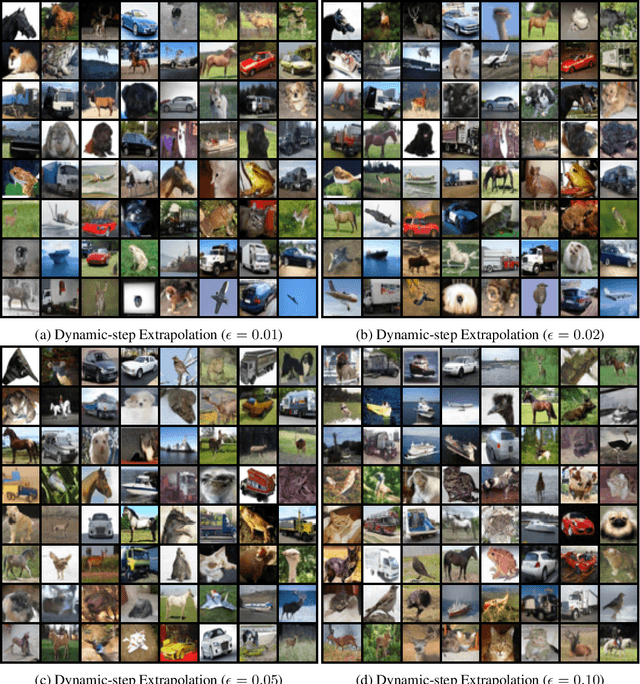
Abstract:Score-based (denoising diffusion) generative models have recently gained a lot of success in generating realistic and diverse data. These approaches define a forward diffusion process for transforming data to noise and generate data by reversing it (thereby going from noise to data). Unfortunately, current score-based models generate data very slowly due to the sheer number of score network evaluations required by numerical SDE solvers. In this work, we aim to accelerate this process by devising a more efficient SDE solver. Existing approaches rely on the Euler-Maruyama (EM) solver, which uses a fixed step size. We found that naively replacing it with other SDE solvers fares poorly - they either result in low-quality samples or become slower than EM. To get around this issue, we carefully devise an SDE solver with adaptive step sizes tailored to score-based generative models piece by piece. Our solver requires only two score function evaluations, rarely rejects samples, and leads to high-quality samples. Our approach generates data 2 to 10 times faster than EM while achieving better or equal sample quality. For high-resolution images, our method leads to significantly higher quality samples than all other methods tested. Our SDE solver has the benefit of requiring no step size tuning.
Adversarial score matching and improved sampling for image generation
Oct 10, 2020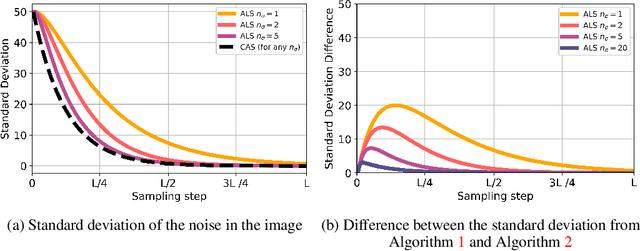



Abstract:Denoising Score Matching with Annealed Langevin Sampling (DSM-ALS) has recently found success in generative modeling. The approach works by first training a neural network to estimate the score of a distribution, and then using Langevin dynamics to sample from the data distribution assumed by the score network. Despite the convincing visual quality of samples, this method appears to perform worse than Generative Adversarial Networks (GANs) under the Fr\'echet Inception Distance, a standard metric for generative models. We show that this apparent gap vanishes when denoising the final Langevin samples using the score network. In addition, we propose two improvements to DSM-ALS: 1) Consistent Annealed Sampling as a more stable alternative to Annealed Langevin Sampling, and 2) a hybrid training formulation, composed of both Denoising Score Matching and adversarial objectives. By combining these two techniques and exploring different network architectures, we elevate score matching methods and obtain results competitive with state-of-the-art image generation on CIFAR-10.
 Add to Chrome
Add to Chrome Add to Firefox
Add to Firefox Add to Edge
Add to Edge